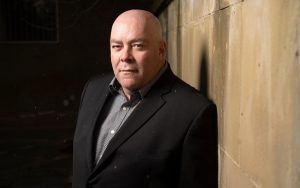
How do you rate councils’ efforts to recruit people from diverse backgrounds into social work leadership roles?
- Very poorly (46%, 125 Votes)
- Quite poorly (28%, 77 Votes)
- Very highly (14%, 39 Votes)
- Quite highly (12%, 32 Votes)
Total Voters: 273
Racial diversity among directors of children’s services remains low, compared with the populations they serve and the workforces they lead, a survey has revealed.
Just 6% of DCSs were black or from a non-white ethnic minority as of 31 March 2023, compared with 18% of the population of England and Wales in the 2021 census and 24% of statutory children’s social workers in England, as of September 2022.
The figure was released last week by the Association of Directors of Children’s Services (ADCS) in its annual update on the DCS workforce, and showed little change on the previous year, when the figure was 5%.
Ethnic breakdown of DCS workforce: 2023
- 81% white British (2022: 82%)
- 6% other white (2022: 8%)
- 5% white Irish (2022: 4%)
- 2% white and Asian (2022: 2%)
- 2% white and black Caribbean (2022: 1%)
- 1% black African (2022: 1%)
- 1% prefer not to say (2022: 1%)
Source: ADCS DCS update: annual report 2022-23
This year’s data is more comprehensive, being based on 131 responses, 86% of the total, compared with 94 (62%) last year.
‘Huge amount still to do on ethnic diversity’

John Pearce, ADCS president, 2023-24
ADCS president John Pearce said it showed there was “a huge amount still to do” in improving ethnic diversity among DCSs.
“This is something all local authorities are focussed on, as is the association. It is important that our sector leaders are representative of the communities they serve, and that we fully maximise the potential within our sector.”
He said the association was setting up a working group “which will explore what ADCS can do to encourage and increase greater diversity across the association”.
The issue was also highlighted by leadership development body the Staff College in a report earlier this year on how to reduce turnover among DCSs.
‘Urgent action needed to tackle racism’
The report said the lack of ethnic diversity reflected a loss of talent and councils needed to be addressed through targeted leadership development. It also urged action to tackle racism, misogyny and other forms of discrimination “so that people feel welcomed and valued in the workplace and that the pipeline of talent through to a DCS role is as wide as possible”.
The college runs an annual there-day training scheme, the Black and Asian Leadership Initiative (BALI), to tackle the barriers to children’s services leaders from ethnic minorities rising to leadership roles, particularly director level. It also runs a network for BALI alumni.
For the first time, the ADCS survey also asked directors about other aspects of identity, finding that:
- 60% were aged 50-59, 21% were 40-49 and, 15% aged 60-65.
- 8% considered themselves disabled.
- 51% said they had no religion, while 37% identified as Christian.
- 83% of DCSs identified as heterosexual, 11% as gay or lesbian and 3% as bisexual.
As in 2022, just under two-thirds of directors were women, with the proportion of female leaders increasing steadily from 2018, when the split was last 50:50. However, the current percentage of female directors (64%) is below the proportion of women in the children’s social work workforce in England (87%).
DCS turnover rising and below that for adults’ chiefs
Turnover among DCSs had also risen from 2022-23, while the numbers leaving the role were higher than for directors of adult social services (DASSs) and council chief executives, the research revealed.
There were 50 DCS changes during the year, across 42 authorities (28% of the total), up from 47 changes across 36 councils in 2021-22. By contrast, there were 42 changes of DASS in 2022 and 19 moves at chief executive level in 2022-23.
While the number of DCS changes was below the average per year since 2007-8 (48), it fell far short of the record of 65, in 2017-18.
The recent Staff College report found that council culture was the biggest driver of job satisfaction among DCSs, with a third of directors surveyed for it reporting that bureaucratic, political, financial and workload pressures were among the “frustrations” of the job.
Its recommendations included:
- Greater national and local recognition of the role.
- For Ofsted to reduce the “blame culture” associated with children’s services inspections.
- The development of supportive working cultures within councils.
Ongoing fall in directors also running adults’ services
The number of DCSs with statutory responsibility for adults’ services continued to fall, hitting a low of 16 as of April 2023, down from 22 the year before and 61 in March 2015.
Government statutory guidance warns councils against combining the DCS role with other responsibilities because of its “breadth and importance”.
ADCS president John Pearce added: “One reason why more local authorities may have moved away from these combined arrangements than adopted them in the past year could be because of the complex challenges and demands facing both local authority children’s services and adult services.
“However, it is for local authorities to design their local systems to best meet the needs of communities. The key thing remains there must be a clear and ultimate line of accountability for children’s outcomes in a local area.”





 A trauma-informed approach to social work: practice tips
A trauma-informed approach to social work: practice tips  Problem gambling: how to recognise the warning signs
Problem gambling: how to recognise the warning signs 




 Find out how to develop your emotional resilience with our free downloadable guide
Find out how to develop your emotional resilience with our free downloadable guide  Develop your social work career with Community Care’s Careers and Training Guide
Develop your social work career with Community Care’s Careers and Training Guide  ‘Dear Sajid Javid: please end the inappropriate detention of autistic people and those with learning disabilities’
‘Dear Sajid Javid: please end the inappropriate detention of autistic people and those with learning disabilities’ Ofsted calls for power to scrutinise children’s home groups
Ofsted calls for power to scrutinise children’s home groups Seven in eight commissioners paying below ‘minimum rate for home care’
Seven in eight commissioners paying below ‘minimum rate for home care’
 Facebook
Facebook X
X LinkedIn
LinkedIn Instagram
Instagram
Comments are closed.